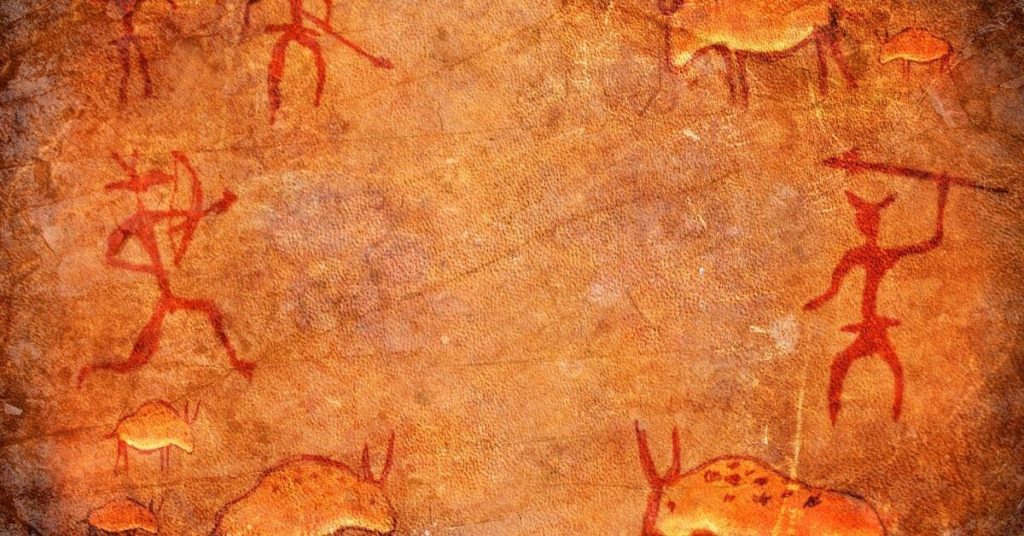Introduction
Embracing Ancestral Wisdom: Understanding the Proper Human Diet Principles
In the dynamic world of nutrition, the concept of the “Proper Human Diet” offers a compelling perspective, advocating a return to the dietary roots of our ancestors. At its core, this diet emphasizes a high-protein, low-carbohydrate approach, prioritizing meats, fish, and minimally processed plant foods. It’s a dietary philosophy that seeks to align modern eating habits with those of our forebears, advocating for nutrition that supports our natural biological needs.
The Importance of Ancestral Diets in Modern Nutrition
As we navigate the complex terrain of contemporary dietary advice, the significance of ancestral diets comes into sharp focus. Today’s food landscape, dominated by processed products, stands in stark contrast to the whole, natural foods consumed by our ancestors. These traditional diets, developed over millennia, offer not just sustenance but a holistic approach to health and well-being, deeply intertwined with the environment.
For those new to the concept and seeking a foundational understanding, be sure to read our detailed beginner’s guide to the Proper Human Diet, where we provide step-by-step advice on adopting this lifestyle and delve into its fundamental principles.
The Objective: Exploring Global Traditional Diets
This article sets out on a journey to explore traditional diets from different cultures worldwide, examining how they mirror the principles of the Proper Human Diet. Our exploration takes us through the diverse dietary practices of various communities, from coastal areas rich in seafood to the meat-centered diets of nomadic tribes.
By delving into these varied eating habits, we aim to identify the universal principles of consuming whole, unprocessed foods and maintaining a harmonious relationship with our natural food sources.
This exploration is more than a look back at our culinary history; it’s a quest to rediscover the timeless wisdom embedded in these diets and to understand how they can influence and enhance our modern approach to eating. Join us as we weave through the rich, diverse tapestry of global ancestral diets, bridging continents and eras in our pursuit of dietary enlightenment.
The Concept of Ancestral Diets

Defining Ancestral Diets: A Focus on Meat-Based, Whole Foods
Ancestral diets, often synonymous with traditional diets, are characterized by their reliance on natural, unprocessed foods, with a significant emphasis on meat-based sources. These diets reflect the eating patterns of various cultures before the advent of modern agriculture and widespread food processing.
Central to these diets is the consumption of a variety of meats, including game, fish, and domesticated animals, prepared and consumed in ways that maximize nutritional value. These meat-based components were complemented by other whole foods like nuts, providing a well-rounded nutrient profile.
The Link Between Ancestral Eating Habits and Health
The health implications of ancestral diets, particularly those rich in meat-based, whole foods, are profound. Such diets were naturally high in protein, essential fats, vitamins, and minerals, offering robust nutritional content.
The absence of processed foods and refined carbohydrates in these diets meant lower risks of chronic conditions such as obesity, diabetes, and heart disease, which are often associated with modern eating habits.
Populations adhering to these traditional, meat-centric diets typically exhibited strong physical health, resilience, and longevity, suggesting a positive correlation between these ancestral eating patterns and overall well-being.
Commonalities in Meat-Based Traditional Diets Worldwide
Despite cultural and geographical differences, there are striking similarities in meat-based traditional diets around the world. These include:
- High-Protein Focus: Across continents, traditional diets prioritize meat as a key source of protein. This includes everything from fish and seafood in coastal regions to game and domesticated livestock in inland areas.
- Whole, Unprocessed Foods: Ancestral diets rely on foods in their natural state. This means meats are often consumed with minimal processing alongside fresh, locally sourced plant foods.
- Use of the Entire Animal: Traditional practices often involve utilizing the entire animal, including organs, which are rich in nutrients like vitamins, minerals, and essential fats.
- Seasonal and Regional Eating: These diets are closely tied to the seasons and the regional availability of food sources, reflecting a deep connection to the natural environment and sustainable practices.
- Culinary Diversity: Despite the common focus on meat, there is significant culinary diversity in how different cultures prepare and consume meat, reflecting unique culinary traditions and techniques.
By understanding these core aspects of ancestral, meat-based diets, we can gain valuable insights into the principles of the Proper Human Diet and how such eating patterns might be beneficial in the context of modern nutrition. This exploration into traditional dietary practices is not only a journey into our past but also a potential roadmap for enhancing our contemporary dietary approaches.
Ancestral Diets in Different Continents

Asia: A Melting Pot of Diverse Diets
Asia, with its vast array of cultures and environments, offers a rich perspective on ancestral diets, particularly those aligned with the principles of the Proper Human Diet.
Traditional Diets in East Asia: The Harmony of Sea and Land
In East Asia, countries like Japan have historically harnessed the bounty of the sea. The traditional Japanese diet is renowned for its emphasis on fish and seafood, reflecting the country’s strong maritime culture. This diet is balanced with the consumption of fermented foods, such as miso, and a modest intake of rice. The minimal processing of food and the high consumption of omega-3-rich seafood align well with the principles of whole, nutritious eating found in the Proper Human Diet.
South Asian Diets: A Rich Tapestry of Meat and Dairy
Moving to South Asia, countries like India and Pakistan present a different aspect of ancestral diets. While there is a significant vegetarian presence due to cultural and religious influences, the traditional diets of many regions in South Asia heavily feature meat and dairy products.
For instance, in the northern regions, diets are rich in lamb, goat, and poultry, often cooked in flavorful stews and curries. Dairy products like ghee (clarified butter) and paneer (a type of cottage cheese) are also integral, providing a rich source of fat and protein.
Southeast Asian Ancestral Dietary Practices: A Blend of Land and Water
Southeast Asia, encompassing countries like Thailand, Vietnam, and Indonesia, offers a diet that is a blend of terrestrial and aquatic sources. These regions traditionally relied on a variety of meats, including poultry, pork, and beef, complemented by an abundant supply of freshwater and saltwater fish.
The use of fresh herbs and spices in cooking is a hallmark of Southeast Asian cuisine, contributing both flavor and additional nutritional benefits. The diets here exemplify a balance of protein sources with a strong emphasis on fresh, natural ingredients.
Each of these regions within Asia demonstrates how geography, climate, and cultural traditions have shaped unique ancestral diets. Yet, all share common elements with the Proper Human Diet: a focus on whole, unprocessed foods, a balanced intake of animal proteins, and a harmonious relationship with their natural food sources.
These traditional diets provide valuable insights into how varied and rich a diet based on ancestral principles can be, offering a template for healthful eating in our modern world.
Africa: Tradition Meets Diversity

North African Traditional Meat and Fish Dishes
In North Africa, the ancestral diet is a captivating blend of land and sea. This region, encompassing countries like Morocco, Algeria, and Egypt, boasts a culinary tradition rich in meat and fish dishes. Lamb and goat are staple meats, often slow-cooked or grilled, imbued with the flavors of a myriad of spices like cumin, coriander, and saffron.
Fish, too, plays a significant role, particularly in coastal areas, where dishes like grilled sardines or fish tagine are common. These preparations highlight the Proper Human Diet’s principles, emphasizing whole, nutrient-dense foods with minimal processing. The use of spices not only enhances flavor but also offers various health benefits, aligning with the diet’s focus on natural, health-promoting ingredients.
Sub-Saharan African Ancestral Diets and Their Reliance on Animal Proteins
Moving to Sub-Saharan Africa, the dietary landscape shifts, but the reliance on animal proteins remains a constant. This vast region, with its diverse climates and ecosystems, has developed a range of dietary practices that heavily feature meat.
In East Africa, pastoral communities like the Maasai have traditionally relied on cattle for both meat and milk, valuing these products for their nutritional richness. In the savannas and grasslands, game meats such as venison from antelope or buffalo are common, reflecting the region’s hunting heritage.
These diets, rich in animal proteins, are in harmony with the Proper Human Diet’s emphasis on high-quality protein sources. They showcase how ancestral diets adapt to local environments, utilizing available resources to create nourishing and sustainable eating practices.
Both North and Sub-Saharan Africa demonstrate a deep understanding of how to utilize animal proteins effectively, adapting their culinary practices to local conditions and available resources. These ancestral diets, with their focus on meats, fish, and the use of natural spices and cooking methods, offer a vivid illustration of the principles of the Proper Human Diet.
They provide not just a blueprint for healthful eating but also a rich cultural heritage that speaks to the diversity and adaptability of traditional culinary practices.
Europe: A Continent of Culinary Contrast

The Mediterranean Diet: A Symphony of Meat and Seafood
In the sun-drenched regions of the Mediterranean, the traditional diet is celebrated worldwide for its delicious flavors and health benefits. Countries like Greece, Italy, and Spain have long embraced a diet rich in meats, seafood, olive oil, and fresh produce.
This diet includes a variety of meats such as lamb, beef, and pork, often prepared with olive oil and herbs, showcasing a commitment to whole, unprocessed foods. Seafood also plays a pivotal role, with the consumption of fish like sardines, mackerel, and anchovies, which are high in omega-3 fatty acids.
The Mediterranean diet perfectly encapsulates the Proper Human Diet’s principles, focusing on high-quality protein sources, healthy fats, and fresh vegetables. This diet not only offers a model for healthful eating but also embodies a lifestyle that values leisurely dining and the enjoyment of food as a communal experience.
Northern European Diets: A Rich Heritage of Meat and Fish

Moving northwards, the ancestral diets of countries like Sweden, Norway, and Finland present a robust reliance on meat and fish adapted to the colder climates. These regions historically depended on a diet rich in animal proteins to withstand the harsh winters. Game meats, including elk, reindeer, and wild boar, were staples, often smoked or cured for preservation. It is often called “the Northern diet“.
Fish, particularly fatty varieties like salmon and herring, were also integral, providing essential nutrients during the long winter months. Dairy products, particularly cheese and butter, were also prominently featured in these diets. The Northern European dietary practices align with the Proper Human Diet in their emphasis on high-quality animal proteins and fats, demonstrating how traditional diets can be both nourishing and sustainable, even in challenging environments.
Europe, with its Mediterranean and Northern regions, offers a striking example of how geography and culture shape dietary practices. Both regions, despite their climatic differences, adhere to the core principles of the Proper Human Diet:
- A focus on meat and seafood as primary protein sources
- The use of whole, unprocessed foods
- A harmonious relationship with their natural environment
These diverse culinary traditions provide not just a blueprint for healthful eating but also a rich tapestry of flavors and practices that celebrate Europe’s vast cultural heritage.
The Americas: A Land of Pristine Diets

Native American Diets: Harmony with Nature Before Agriculture
Before the agricultural revolution significantly altered eating habits, Native American diets were deeply intertwined with the land and its seasonal cycles. These diets varied greatly depending on the region, from the bison-heavy diets of the Great Plains to the fish-centric diets of the Pacific Northwest.
In all cases, there was a strong emphasis on meat and wild game, including deer, elk, and rabbit, as well as a variety of birds and fish. These animal proteins were supplemented with native plants, nuts, berries, and seeds, which were foraged according to the seasons.
The Native American diets exemplify the core principles of the Proper Human Diet, highlighting the importance of whole, unprocessed foods and a diet adapted to the local environment.
South American Traditional Diets: Embracing Meat and Fish
In South America, the traditional diets reflect the continent’s vast biodiversity and range of ecosystems. The Amazonian tribes, for example, relied heavily on fish from the rivers, along with nuts from the rainforest.
In the Andean regions, diets were centered around high-protein meats like llama and guinea pig. Coastal areas saw a heavy emphasis on seafood, including shellfish and various fish species.
Rich in animal proteins, these diets align with the Proper Human Diet’s focus on nutrient-dense, minimally processed foods.
The Americas, with their vast array of indigenous cuisines, offer a unique perspective on ancestral diets. Both Native American and South American traditional diets showcase a profound understanding of using local resources sustainably and healthfully.
They exemplify the principles of the Proper Human Diet, emphasizing high-quality animal proteins and a close relationship with the natural food sources available in their respective environments. These diets not only provide a model for nutritious eating but also reflect the rich cultural and environmental diversity of the Americas.
Oceania: Nourished by Land and Sea

Traditional Diets of Indigenous Australians: A Connection to the Land
The traditional diets of Indigenous Australians are a fascinating study in adaptation and sustainability. These diets varied significantly across the vast continent, reflecting the diversity of its ecosystems. In the arid interior, diets were heavily reliant on hunted meats such as kangaroo, emu, and other native game, which are lean and high in protein.
Coastal communities utilize a wide variety of seafood, including fish, shellfish, and sea turtles. This way of eating, deeply rooted in the natural environment, aligns with the Proper Human Diet’s principles of prioritizing whole, unprocessed foods and sourcing high-quality animal proteins.
Pacific Islander Diets: A Rich Seafood Tradition
In the islands of the Pacific, traditional diets are centered around the abundant marine resources. Islander communities across regions like Polynesia, Micronesia, and Melanesia have long relied on fishing for their primary sustenance. Their diets prominently feature a variety of fish, shellfish, and other seafood, which are often prepared simply, either grilled or cooked in earth ovens.
These seafood-based diets are complemented by root vegetables like taro, yams, and coconut, which provide both fat and flavor. The Pacific Islander diets exemplify the Proper Human Diet’s focus on nutrient-dense animal proteins and minimally processed plant foods, reflecting a harmonious balance between the sea’s bounty and the land’s produce.
Both Indigenous Australian and Pacific Islander diets showcase a profound connection to their environment, utilizing the resources available to them in sustainable and healthful ways. These diets, rich in animal proteins, not only adhere to the principles of the Proper Human Diet but also offer a window into the diverse culinary traditions and environmental adaptations of the Oceania region.
They provide valuable insights into how traditional communities have thrived on diets that are both nourishing and respectful of the natural world.
Key Characteristics of Ancestral Diets

High Protein and Low Carbohydrate Focus
One of the most prominent features of ancestral diets across the globe is their emphasis on high-protein and low-carbohydrate intake. This focus is rooted in the consumption of animal proteins, such as meat, fish, and, in some cultures, dairy products.
These sources of protein were vital for the development and maintenance of physical health, providing essential amino acids, vitamins, and minerals. Unlike modern diets, which often feature a high proportion of carbohydrates, especially refined sugars and grains, traditional diets were naturally lower in carbs.
The carbohydrates that were consumed typically came from whole foods like fruits, vegetables, and, in some cases, whole grains or tubers, providing necessary energy and nutrients without the high glycemic load of processed carbs.
Use of Whole, Unprocessed Foods
Ancestral diets universally prioritized whole, unprocessed foods. This practice was not just a matter of preference but of necessity, as food processing technologies were either rudimentary or non-existent. Meats were consumed with minimal processing, and grains and seeds, when included, were whole or minimally refined.
This approach ensured that diets were rich in nutrients and free from additives, preservatives, and other chemicals commonly found in modern processed foods. The consumption of whole foods also meant a higher intake of dietary fiber, beneficial fats, and a diverse range of micronutrients, contributing to overall better health.
Seasonal and Regional Variations in Diet
Traditional diets were closely tied to the seasons and the specific region’s available resources. Before the advent of global food trade and refrigeration, people ate what was available locally and in season. This practice not only ensured a diet that varied throughout the year, providing a diverse range of nutrients, but also one that was sustainable and in harmony with the local environment.
For example, coastal communities would rely heavily on seafood, while inland communities might depend more on game meats. Seasonal variations also meant that fruits and vegetables were consumed when they were at their peak of ripeness and nutritional value.
This connection to the local environment and seasonal cycles is a stark contrast to the modern tendency towards a static, year-round diet, often reliant on foods transported from distant locations.
These key characteristics of ancestral diets – a focus on high-quality protein, the use of whole, unprocessed foods, and adherence to seasonal and regional variations – offer valuable lessons for contemporary eating practices. They underscore the importance of a diet that is not only nutritious but also sustainable and in tune with the natural world, principles that are increasingly relevant in today’s globalized and processed food-dominated society.
Modern Adaptation of Ancestral Diets to the Proper Human Diet

Integrating Ancestral Diet Principles into Modern Eating Habits
Adopting a Proper Human Diet, inspired by ancestral eating habits, involves a significant focus on meat-based foods. This adaptation calls for prioritizing high-quality animal proteins such as grass-fed beef, free-range poultry, wild-caught fish, and organ meats.
Embracing this approach means reducing the intake of processed foods and carbohydrates and, instead, sourcing nutrient-rich meats that align with our evolutionary dietary patterns. The challenge is to balance modern convenience with the nutritional virtues of a meat-centric diet reminiscent of our ancestors’ practices.
Challenges and Considerations in Adopting a Meat-Centric Ancestral Diet Today
One of the main challenges in following a meat-based ancestral diet in modern times is ensuring the quality and sustainability of the meat sources. With the prevalence of factory farming, finding ethically sourced, grass-fed, and hormone-free meats can be a hurdle.
Additionally, there might be societal and cultural misconceptions about a diet heavily focused on animal proteins, often viewed contrary to popular plant-centric dietary trends. Adapting to a meat-centric diet also requires understanding the different nutritional profiles of various types of meat and how to prepare them to maximize nutrient retention.
Tips for Incorporating Traditional Meat-Based Practices into the Proper Human Diet
To effectively integrate these ancestral, meat-centric dietary practices into a modern Proper Human Diet, consider the following tips:
- Quality Over Quantity: Focus on the quality of the meat. Opt for grass-fed, organic, and free-range options wherever possible, as they are typically richer in essential nutrients.
- Variety is Key: Include a variety of meats in your diet. Explore different types of meats, including organ meats, which are often nutrient-dense.
- Ethical and Sustainable Choices: Whenever possible, choose meats from local sources that practice sustainable and ethical farming. This not only supports local economies but also ensures fresher and potentially healthier meat options.
- Learn Traditional Cooking Methods: Embrace slow cooking, smoking, and grilling methods that enhance flavor and retain the nutritional integrity of the meat.
- Educate Yourself on Nutritional Profiles: Understanding the nutritional content of various meats can help in making informed dietary choices that align with your health goals.
- Plan and Prepare: Given the importance of meat quality, planning your meals and sourcing your ingredients ahead of time can be crucial.
- Community and Support: Engage with communities that follow similar diets for support, recipe sharing, and sourcing tips.
By adopting these practices, one can align modern eating habits more closely with ancestral, meat-based dietary principles. This approach is not only a nod to our past but also a step towards a health-focused future, emphasizing the consumption of whole, nutrient-rich animal proteins in line with the Proper Human Diet philosophy.
Cultural Significance and Sustainability in Ancestral Diets
The Cultural Importance of Maintaining Traditional Diets
Traditional diets, particularly those rich in meat-based foods, hold profound cultural significance. They are often intertwined with a community’s identity, rituals, and heritage.
Maintaining these diets is not just about preserving a way of eating but also about safeguarding cultural practices and knowledge that have been passed down through generations. For many communities, traditional meat preparation and consumption methods are a crucial part of cultural ceremonies and festivities.
By honoring these dietary traditions, we keep alive a vital part of our collective human heritage, fostering a sense of connection and continuity with our ancestors.
Sustainability Considerations in Adopting Ancestral Eating Habits
Adopting ancestral eating habits, especially those centered around meat, necessitates a thoughtful approach to sustainability. This involves considering the environmental impact of meat production and making choices that support ecological balance. Opting for locally sourced, grass-fed, and free-range meats can reduce the carbon footprint associated with meat consumption.
Additionally, supporting farming practices that prioritize animal welfare and ecological health contributes to a more sustainable food system. The Proper Human Diet, with its emphasis on high-quality animal proteins, aligns well with these sustainability goals, promoting a way of eating that is both healthful for individuals and responsible for the planet.
The Role of Traditional Diets in Preserving Biodiversity
Traditional, meat-based diets can play a crucial role in preserving biodiversity. By valuing diverse animal species and breeds, especially those that are indigenous and adapted to local environments, these diets help maintain a variety of life forms.
Sustainable meat consumption practices, such as utilizing the whole animal and supporting a range of different meat sources, contribute to a balanced ecosystem. This approach not only ensures the conservation of different species but also preserves the natural habitats and ecosystems where these animals thrive. In this way, traditional diets, when practiced thoughtfully, can be a force for maintaining biodiversity and ecological health.
In conclusion, the cultural importance and sustainability of ancestral diets, particularly those rich in meat, are integral to their continued relevance and practice. By understanding and embracing these aspects, we can adopt eating habits that honor our cultural heritage, promote sustainability, and contribute to the preservation of biodiversity. This approach aligns with the principles of the Proper Human Diet, offering a path that is both nourishing and respectful of the world we live in.

Conclusion
Recap of Insights from Exploring Ancestral Diets
Our journey through the world of ancestral diets has revealed a rich mosaic of eating practices, each uniquely adapted to its environment and cultural context. Central to these diets is a consistent emphasis on high-quality animal proteins sourced and consumed in ways that are both sustainable and respectful of natural ecosystems.
From the fish-based diets of the Pacific Islanders to the meat-centric meals of the Indigenous Australians and the varied animal protein sources across the continents of Africa, Asia, and the Americas, these traditional diets offer valuable lessons in nutrition and sustainability.
Potential Benefits of Aligning Modern Diets with Ancestral Eating Practices
Aligning modern diets with these ancestral eating practices has the potential to offer numerous health benefits. By focusing on high-quality, whole-food sources of animal protein and reducing our reliance on processed foods and carbohydrates, we can move towards a diet that is more in tune with our evolutionary needs.
This shift can lead to improved overall health, including better metabolic function, increased nutrient density in our diets, and potentially a reduction in chronic diseases that are prevalent in modern societies. Additionally, adopting sustainable practices in sourcing and consuming animal proteins can contribute positively to environmental conservation efforts.
Final Thoughts on the Relevance of Ancestral Diets in Today’s World
In today’s world, where dietary trends come and go, the timeless wisdom of ancestral diets remains profoundly relevant. These diets offer more than just a blueprint for what to eat; they provide a holistic approach to food that encompasses cultural heritage, environmental stewardship, and healthful living.
By embracing the principles of these traditional diets, particularly their focus on high-quality animal proteins and sustainable practices, we can forge a path toward a future where our food choices support both our health and the health of the planet. In essence, the ancestral diet, especially as it aligns with the principles of the Proper Human Diet, is not just about looking back to our past; it’s about laying the foundation for a healthier, more sustainable future.
References and Further Reading
Recommendations for Further Exploration
- “Lies My Doctor Told Me” by Dr. Ken Berry: This book challenges common health myths and misconceptions, providing insights into more effective and natural ways to achieve good health, including dietary practices.
- “The Carnivore Diet” by Shawn Baker: An exploration of the Carnivore Diet from one of its most prominent advocates, this book delves into the science and practice of consuming an all-meat diet.
These sources are specifically chosen to align with the themes of the Proper Human Diet and offer a focused perspective on the benefits and practices of meat-based, ancestral diets. They provide a wealth of information for anyone looking to deepen their understanding of this dietary approach and its implications for health and wellness.
If you’re ready to start incorporating the Proper Human Diet into your daily routine, check out our 7-day meal plan featuring delicious and nutritious Proper Human Diet recipes. This plan is designed to make your transition to this healthful way of eating both enjoyable and straightforward.


